#2010s Patriots
Explore tagged Tumblr posts
Text
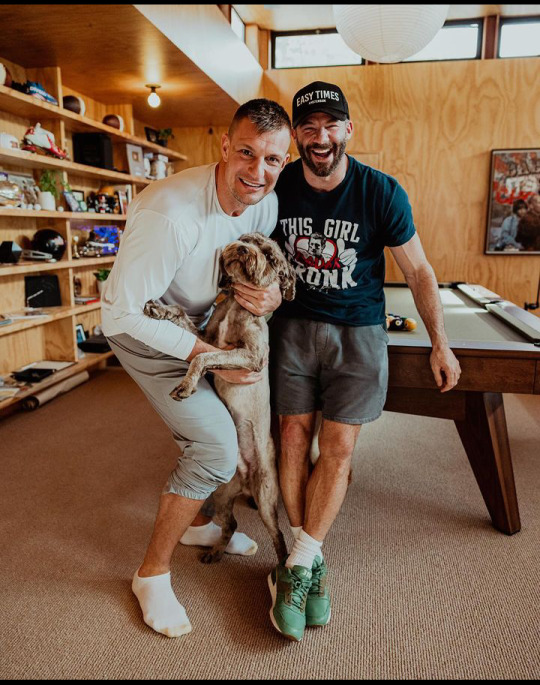

"2024 is off to a hot start"
.
.
Julian Edelman sharing a few Behind the Scenes photos via Instagram // Wednesday, January 31st, 2024
#Julian Edelman#Rob Gronkowski#Danny Amendola#2010s Patriots#best friends#retired life#Also featuring Julian's dog Rocky#JE11#RG87#DA80#tampatom12.posts#babes#love
14 notes
·
View notes
Text
In support of Hot General Summer (tm)
I realized that my recent poll not only lacked visual support but also left out a lot of my fave cdrama generals. So, in support of my Hot General Summer agenda:
Xiao Qi, Rebel Princess

Wei Wu Ji, Sound of the Desert

Ling Buyi, Love Like the Galaxy

Zhousheng Chen, One and Only

Zhao Yun, God of War Zhao Yun

Sima Yi, Secret of Three Kingdoms

Han De Rang, The Legend of Xiao Chuo

Zhan Beiye, Legend of Fuyao

Gao Chang Gong, Lan Ling Wang

Xiang Yu, Story of Han Dynasty

Cao Pi, The Advisors’ Alliance

Meng Tiang Fang, Ancient Terracotta War Situation
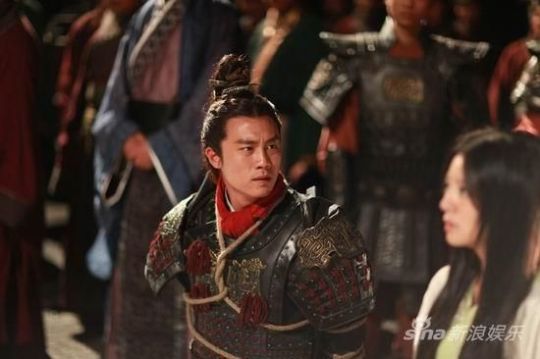
Chu Bei Jie, General and I
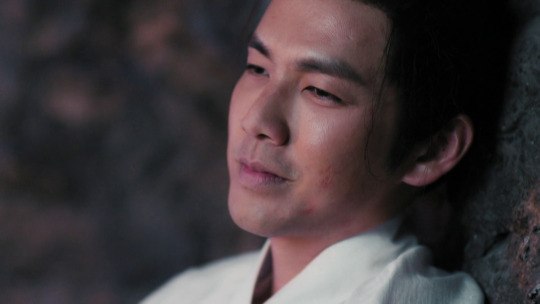
Zhu Zan, Jin Jiu Ling

Wolfie, The Wolf
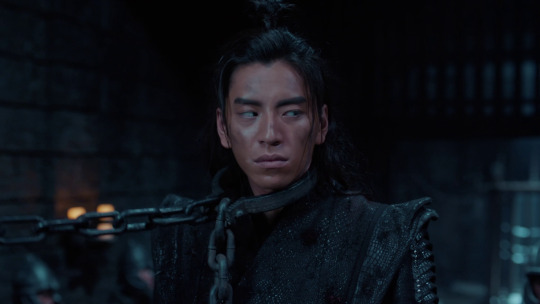
Xiang Yu, Legend of Chu and Han

Cheng Yi, The Promise of Chang’an

Liu Xiu, Singing All Along

Huo Xin, Painted Skin the Resurrection

Meng Qi You, Glamorous Imperial Concubine

Yang Bros, The Young Warriors

Weng Gui, Princess Jieyou

Xiao Ping Zhang, Nirvana in Fire 2

Pei Zhao, Maiden Holmes

Ji Ye, Novoland Eagle Flag

Zhu Qi Zhen, Imperial Doctress (it’s a reach he’s an emperor. But he leads his force in battle and I wanted Wallace Huo there so...)

Yuan Ling, Lost Love in Times

Yi Xiao Chuan, The Myth

Gu Tingye, The Story of Ming Lan
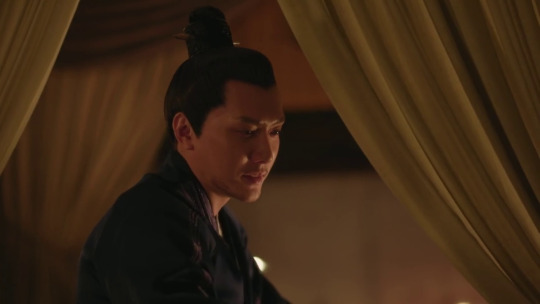
Lu Bu, Three Kingdoms 2010
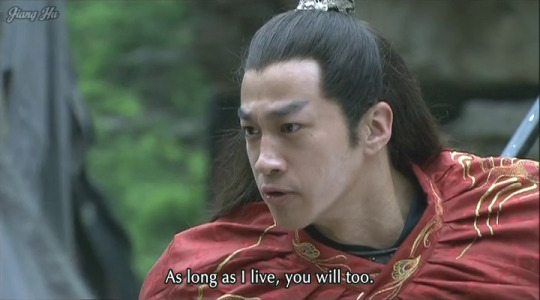
Xu Lingyi, The Sword and the Brocade
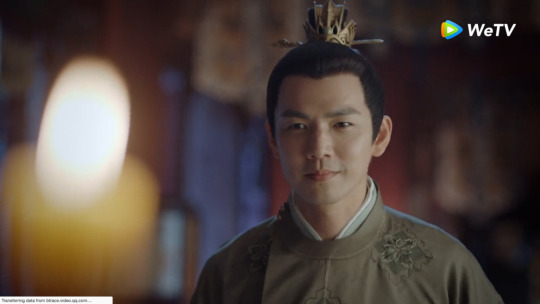
Yue Fei, Patriot Yue Fei

Xiang Yu, The Myth

Ping Zhang, Nirvana in Fire 2

Guo Jing, Legend of Condor Heroes 2008

Xiang Yu, The Legend of Qin
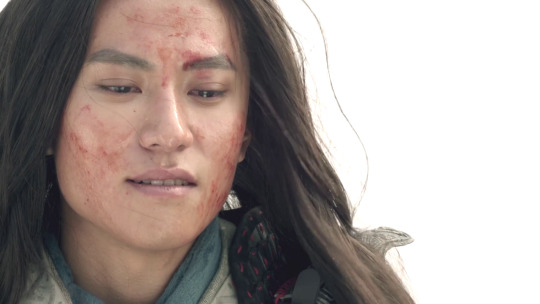
#cdrama#the myth#the legend of qin#nirvana in fire 2#three kingdoms 2010#the story of ming lan#the sword and the brocade#singing all along#patriot yue fei#princess jieyou#general and i#legend of condor heroes#the story of han dynasty#the legend of xiao chuo#novoland eagle flag#ancient terracotta war situation#fight and love with a terracotta warrior#one and only#lan ling wang#legend of chu and han#the wolf#the promise of chang'an#god of war zhao yun#painted skin resurrection#lost love in times#the imperial doctress#glamorous imperial concubine#rebel princess#monarch industry#maiden holmes
174 notes
·
View notes
Text




2014's All-New Captain America Vol.1 #1 cover by cover artist Stuart Immonen, inker Wade Von Grawbadger and colourist Marte Gracia.
#All-New Captain America#Stuart Immonen#sam wilson#falcon#all new marvel now#2014#cool comic art#cool cover#marvel#comics#cool look#wade von grawbadger#marte gracia#2010s#captain america#marvel now#marvel comics#sentinel of liberty#Cap#wings#patriot#shield#red white and blue#america#usa#cover art#the falcon#social justice#rick remender#sam wilson captain america
15 notes
·
View notes
Text

#happy memorial day#memorial day#red white and blue#top hat#sunglasses#bow tie#patriotic#dog#2010s instagram#early 2010s instagram#2010s#early 2010s#instagram
2 notes
·
View notes
Text










#nostalgia#2000s nostalgia#2010s nostalgia#patriotic#Union Jack#USA#fav combo#me fr fr#i love this#cherry#ceramic tile#my obsession#lace#famous#fancy#school of rock#flowers#red#white#blue#⭐️
0 notes
Text
I'm sure this has been done countless times, but polls are fun and I'm curious, so... For the purposes of this poll, I'm only counting shows/books/games/etc. where Sherlock is a main or very prominent secondary character, there's a decent amount of other Sherlock canon characters represented (at least a version of a John Watson), and there are some references made to the ACD originals. Not counting where he's only a relative of the lead but not a main (like Enola Holmes, RKDD, etc.)
Not counting the ACD original canon as an adaptation here, as none of these would exist without it. Everything else listed is adapting it in some way.
There's also some series I haven't watched/read yet but have been recommended that aren't on here yet for the purposes of space, including Detective L, Miss Sherlock and the Bonnie MacBird Sherlock books.
Feel free to reblog this for a larger sample size :)
#sherlock holmes#acd canon#acd holmes#yuukoku no moriarty#moriarty the patriot#cbs elementary#bbc sherlock#yuumori#house md#tgaa#the great ace attorney#herlock sholmes#granada sherlock#granada holmes#rdj sherlock#basil rathbone#detective fiction#sherlock holmes meta#my polls#jeremy brett#rdj holmes#sherlock and co#miss sherlock#sherlock holmes in the 22nd century#acd sherlock holmes#sherlock hound#the great mouse detective#polls#detective polls
624 notes
·
View notes
Text
“Trump’s goal this time is to remake the American government to enhance his power,” Scheiring warns in a new piece for Politico Magazine. “He isn’t the first modern right-wing populist to attempt this — he is following a playbook pioneered by Viktor Orbán.”
When Orbán came to power in 2010, some of his first acts took aim at the independence of Hungary’s judiciary and news media. Orbán rewrote the country’s constitution to force senior judges to retire and set up a new court system overseen directly by his government. He consolidated control over the media. According to experts, 90% of all media in Hungary is now directly or indirectly controlled by Fidesz, Orbán’s party.
Orbán and his allies have also tightened their grip over Hungary’s electoral system. They’ve changed laws to rig the system in his favor and keep him in power in perpetuity.
Much like the American right, Orbán has gone out of his way to stoke division by spreading fear about racial diversity and demonizing immigrants. He’s even embraced the far-right concept of “replacement theory” and warned against “race mixing” in Europe. Orbán has blocked asylum-seekers from entering Hungary and referred to Middle Eastern refugees as “Muslim invaders.”
He’s offered tax breaks and subsidies to boost the Hungarian birth rate for a future without immigration. Orbán and his party have also passed laws prioritizing “patriotic” education, tightened control over Hungary’s state universities and passed laws banning LGBTQ+ content in schools and on children’s television.
Sound familiar?
55 notes
·
View notes
Note
I was wondering this for a while, who would most likely desire a darling like Dazai but female out of the Moriarty brothers, also if you consider the light novels the mental abilities of Bsd verse far surpass the MP verse, so the character with Dazai's level of intellence and his persona.
Okay so I deep dived into reading about Dazai cause I am already a huge BSD fan (Paul Verlaine is the best character and I will fight someone on this) and while Dazai is undoubtedly a genius, he is not quite as smart as say William or Mycroft, he is probably in between Sherlock and William. If you set it in perspective he seems smarter because of the times the mangas/animes take place, Moriarty the Patriot taking place in the Victorian Era while Bungou Stray Dogs is set in modern day (2010s-2020s), so it makes sense how Dazai would seem smarter because he has access to quite a few more modern tools while William does not. There is also the fact that Dazai is written to be this smart mentor character rather than the main character so there is a mysterious feeling to him that adds to the genius appearance.
Anyway continuing on lol
Also for reference I’m going to be using more ADA Dazai for reference, like after all the stuff in the PM happened


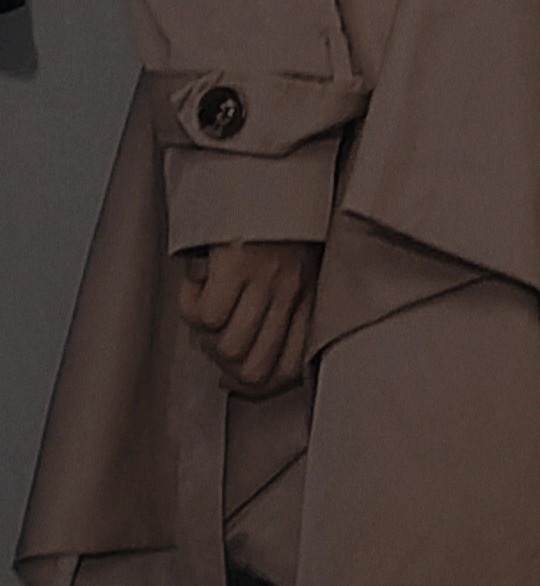
The answer is William, because it is pretty obvious that William has a thing for energetic genius detectives when you look at his interactions with Sherlock. He probably meets his darling when she gets hired via her detective agency to investigate a disappearance of one of his students or something similar, similar to what happened to Lucian, something that would also catch William’s attention. They would not talk, he would just see her out of the corner of his eye, walking about campus. Then when he looks into her and the disappearance he finds out that she is a detective from a well known agency who was hired to look into the disappearance by the family of the student. He did not even speak to her until the student was found and the case was closed, she found the student, but he was the one who put an end to the one who kidnapped them in the first place, the other making the other’s job even more difficult. He would play the role of worrying professor and thank her for saving his student, and drops the question…
“I wonder how you understand criminal activity so well? You found him so quickly, it is quite remarkable.”
He looked into her, digging as deep as he could to see if she would be an issue, similar to what he did with Sherlock. Sure to find out she was a detective with a high intelligence level with self sacrificing tendencies was easy, but it took a bit of help from Albert and perhaps asking Mycroft for a favor to find out about her past…
138 counts of conspiracy to murder…
312 counts of extortion…
625 counts of assorted fraud and other crime…
She was an executive of a criminal organization during her youth and now she deserted them to turn a new leaf. Honestly they are an enigma even to William, so he begins to keep tabs on her, having Moran or Bonde staking out near her agency and having one of them or Fred follow her when she breaks from her normal pattern of working at her agency’s office or going on certain cases. He will even find one of her colleagues whom she mentors and ask the young boy about her.
“Hm? You want to know about her, well she found me when I was kicked out of my orphanage, she is a bit of an odd one but she and the agency took me in when no one else would.”
Eventually he follows her himself one day when she is leaving work, but he certainly did not expect to find her visiting a grave. William pieces it together that she is one of the only people who visits this grave and takes care of it. She just turns over her shoulder to look at him with a smile.
“Hello Professor Moriarty, I was wondering when you were going to follow me yourself rather than having your colleagues do it.”
She knew he was following her this whole time and he sits with her at the grave in silence for a bit, waiting for her to say something, to explain what she is doing here and of course she catches on and answers before he even needs to ask.
“The person buried here was my first friend, when he died he encouraged me to do something meaningful and help other people instead of what I was doing. He wanted me to do something good with my life and so I left. I threw out everything I had before to do something meaningful, I know it will never make up for the wrongs I have done, but it is a start and well… I really do hope the wicked can change their ways because otherwise everything I have done has been in vain and I am a disgrace to the promise I have made to him.”
In a way her words may put the world in perspective to him but he cannot stop his plans to rid the world of the class system. Then again he now has a new found respect for her that he would not dare lay a hand on her, but that being said he cannot allow her to get in the way and if push comes to shove he will deal with her as necessary, but again he respects her too much to harm her…
Taking her in…
He looks at the good she has done and unlike the nobles he has killed she has actually tried to make amends for her actions.
She has made herself a new, taking what was once was wicked in her heart and making it pure…
Her heart is a reflection of what he wants to do to this horrible world.
#william moriarty x reader#moriarty the patriot x reader#yuukoku no moriarty x reader#yuukoku no moriarty#william james moriarty x reader#yandere william james moriarty#yandere moriarty the patriot#yandere yuukoku no moriarty
88 notes
·
View notes
Note
I noticed in the tags for that post about white people clinging to historical ancestor culture stuff in order to "avoid" doing cultural Appropriation had "white people have no culture is one of the worst winning soundbytes of 2010s SJ". Isn't that true though? That white folks gave up what culture they had to assimilate into a blob of "whiteness" to contrast as "not those people?"
You guys are killing me with this shit. What does this even mean? What would it mean for a group to not have a culture? Assimilate? What are the previous cultures assimilating to if there's nothing there?
WASPs, football worshipping rednecks, Appalachian hillbillies, Minnesota Nice, valley girls, the Amish, the Mormons, laid-back cali surfers, bible thumping patriots, granola Oregon hippies, jersey shore, Florida crazy, New York bodega mentality. What created these? How did these stereotypes form when white people have nothing
Just because you think it's boring doesn't mean it's not real, like I genuinely can't wrap my head around attempting to lump what would ***have*** to be dozens of cultures into one and then insisting the paste you just made up is nothing. Culture doesn't require you to find it interesting or cool to exist. It just happens. It's the natural output of humans living around each other.
254 notes
·
View notes
Text
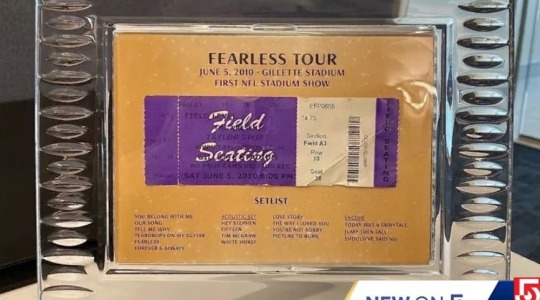
The Kraft Family (owner of the New England Patriots) gifted taylor a framed floor ticket from her first sold out stadium show at Gillette Stadium on June 5, 2010 as a birthday present (x)
201 notes
·
View notes
Text
Thinking more about Tom King; I do wonder how much of how he’s viewed on tumblr is a result of the following two facts:-
The majority of the DC comics fandom on tumblr does not have personal memories of 2001
The majority of the DC comics fandom on tumblr is not prepared to give government security or intelligence the time of day as having a necessary purpose
It sounds a bit ‘you don’t know what you’re missing’ but fundamentally I think part of the problem is that you’re (generally) too young to appreciate many of King’s fundamental storytelling elements, because you’re too young to remember or care about the topics he keeps going back to interrogate.
And this is something that comes up in conversations I have with friends who are school teachers and university lecturers all the time, because September 11 for the majority of their students has now moved from category 1 here to category 3:
Core ‘where were you’ memory (people born early 90s or before)
Foundation of their childhood status quo (mid 90s to mid 2000s; maybe as late as 2007-2008)
History (late 2000s onwards)
They’re the ones at the forefront of talking about this with their students, and it’s moved from ‘default background for undergraduates’ now into ‘history that has an effect on the present’. They’re now too young to have soaked in the exhaustingly omnipresent US patriotism of the culture of the 2000s. And so the reaction of current students as a cohort to things heavily based or reflective on this period is fundamentally different to someone who lived through it.
A similar, earlier comparison would be writers who frame everything through the lens of the Cold War as an analogy for their writing. I’m a category 2 for the fall of the USSR, and I grew up with that dividing line; there was a lot of media made in the 90s that still premised the Soviets as existing into the future (very early 90s stuff that hadn’t been fixed in time) or that frantically had had a word find-replace for “Soviet” to “Russian” but the general attitude hadn’t changed (good comics example here is go read any of KGBeast’s appearances around Knightfall in DC comics; they’re really struggling with what to do about him). There was also even more media that still wanted to hammer Cold War themes but invented new fake countries to overlay it onto and to discuss as being the background of proxy wars, so they had the out of ‘this isn’t a real place, it’s Markovia/Kaznia/Pan Balgravia or Qurac/Kahndaq/Bialya’.
Many of these got further use for decades up until the present, partly because Central Asia has remained a hotspot for conflict for decades as a result of the fallout of the Cold War proxy conflicts, and partly because shoving extra expy states into Europe means you can play with the politics without having to be exact.
Because to me, this is what I see King doing to the present. And why it sticks out is that most people aren’t harping on the themes constantly anymore like they were 20 years ago. But for King it’s a well he keeps going back to because he was so heavily involved in it and didn’t really get the chance to start processing it until he left the CIA around 2010 and started working his feelings out in stories.
Because yes, at this point he’s beating a dead horse, but there are also incredibly successful writers of military thrillers who are STILL writing veiled ‘it’s the Soviets’ or ‘it’s the Arab Terrorists’ plots and selling. There’s clearly an audience for it. The audience just is an aging one.
And as someone who does remember the period, some of his work is extremely ‘oh god I remember’ and some of it is genuinely well thought through analogies interrogating the topic. Media and storytelling are frequently in conversation with the world and with themes the writer cares about. And I think we can all tell how large some of this loomed in Tom King’s life.
#absolutely no shade to all the under 30s#it's just a different age cohorts thing#and King's not writing with younger folk in mind#because his worldview cannot encapsulate not feeling How The World Changed In 2001 down to your bones
29 notes
·
View notes
Text
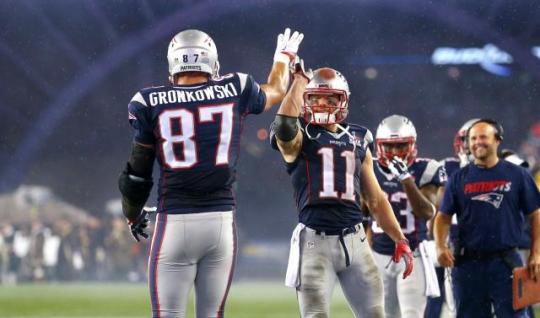
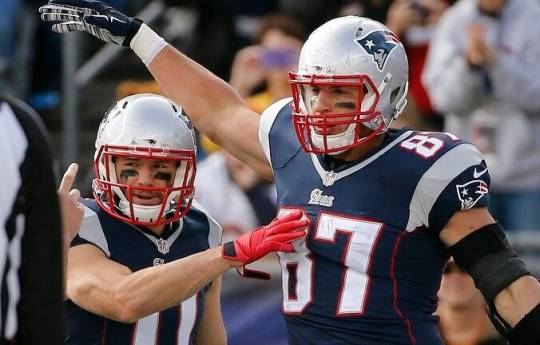
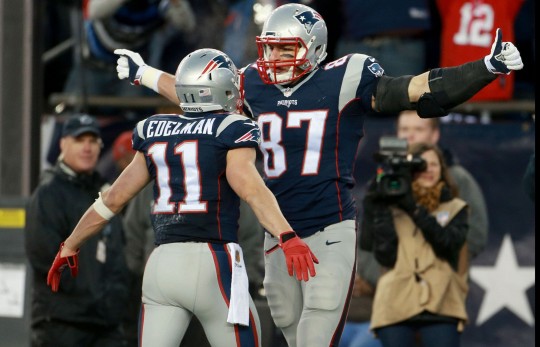
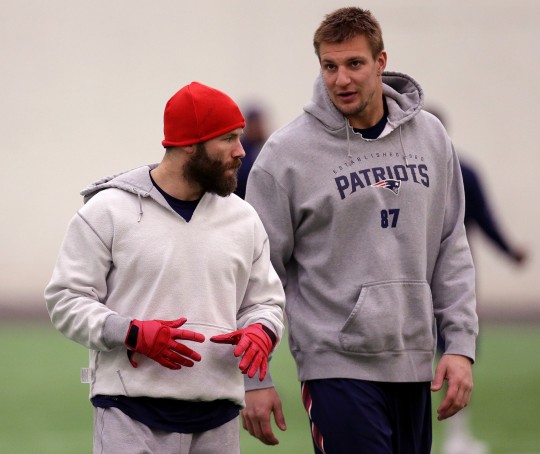


“We actually met each other off the field at an autograph signing,” Gronkowski recalled. “From there, that night we went out together and that's when we officially really became wingmen for life, when I was 21 years old. We went to a club called Splash. I was dancing all over the place. Julian was being Julian, and that's when our friendship and our wingman-type of style hit it off together.” -Rob Gronkowski to People magazine about how he and Julian Edelman's friendship began // Thursday, January 4th, 2024
#Rob Gronkowski#Julian Edelman#RG87#JE11#Rob/Julian#Julian/Rob#New England Patriots#2010s Patriots#wingmen for life#The fact that Rob remembers how they first met in such great detail...!!!!!!#AHHHHHHHHHHHHH!!!!!!!!!!#married behavior#boyfriend/husband behavior#interviews#quotes#People magazine#articles#tampatom12.posts#babes#love
7 notes
·
View notes
Note
I saw that youre writing hiccup+jack but you also claim you want to take a more """historical""" interpretation with your rps? so which one is it?? you have to pick one or the other :/
hello, happy new year! yes, you’re right; i ship and write one of our beloved 2010s dreamworks nostalgic ship hijack with my wonderful best friend and creative soul-mate, @frystsnow. i’ve been having such a fun time! and yes, you’re right again; i am taking a more historical approach and interpretation with my portrayal of hiccup. but no, you’re wrong; i don’t have to choose one or another. my hiccup (håkan) has a more historical take and is queer (demiromantic and bisexual). one does not interfere with another whatsoever.
first of all, thank you for your question! though i don’t know if it stems from genuine ignorance or a hint of homophobia or hypernationalism. either way, i want to extend the benefit of the doubt and commend you for taking the time and energy to send in your inquiry, even as an anon. as someone who specialises in medieval queerness in my current master’s degree and as a licensed history teacher, it’s incredibly heartwarming to see people questioning things (even when it comes to literal fictional ships). i shall not, therefore, take your question as an attempt at an insult. instead, i will respond to you as i would to one of my students and/or the public at a conference. please let me know if you’d like any clarifications, and i’d be more than happy to oblige. should you need such access, i’m excited to send you pdfs of the following scientific articles, too.
i am assuming, by the tone and content of your comment, that you take vikings to be these white-centric, heteronormative, misogynistic and savage-like people, correct? the good old supreme white and straight men propaganda. they were barbarians, blindly bloodthirsty, and god knows how virile they were! they wanted to conquer the world, behead their enemies, muscles and brawl everywhere, grrrrr grrrr! etc etc. the whole spiel of supreme predators/conquerors. this mythical belief has roots in the hyper-nationalism and romanticism ingrained in 18th century northern europe: to prove themselves as worthy, old societies, germany, sweden, denmark, england, scotland and many others utilised their ties with these old tribes and reshaped (rewrote) narratives to fit into their then-current ideals of power, masculinity and politics. an excellent book on historical representation and its rewritings across geographies and due to political influences was written by f. r. ankersmit and a 38-page preview can be found at this link.
it isn’t far off to claim, then, that the use of symbols, narratives and imagery from old norse cultures have been continuously used to represent politics of hate in various countries with the rise of patriotism and alt-right extremism. just look at how john toll’s braveheart (1995) is a hymn to white supremacists in the usa or how european incels love robert zemeckis’ beowulf (2007). i highly recommend reading verena höfig’s article about old norse myths being used as tools for radical nationalist groups and andrew b. r. elliott’s book on medievalism, politics and mass media. “viking men are straight, hyper-masculine and obey this white fantasy of pure dominance.” this way of thinking, shouted and supported by reactionaries, reinforces whiteness, androcentricity, and authoritarianism. medieval scandinavian societies were highly intelligent: being a viking was a profession, not an identity in itself. diplomacy was important for commerce and cultural trade. battle-crazed lunatics were frowned upon, if not straight up removed from tribal settings, as they represented danger to the whole society. a conscious and perfected balance of violence, peace-keeping, trade, conscious pillaging and sea-voyaging made vikings who they were. how else do you think that they kept in contact with asian and african societies? even indigenous ones in americas, too! they were not interested in expanding and conquering more than they could keep and they valued communal efforts. so when contemporary media (tv, books, comics, games) represent our oh-so-beloved macho vikings as being queer or even not all that violent or intolerant, people tend to frown upon such a notion, thinking they’re ludicrous. this, as i’ve continuously expressed up until now, is political propaganda—an old, outdated and incorrect one.
you might here be thinking: “okay balu, i get it, vikings weren’t all that masculine, nor that savage, nor anything, but were there really queer vikings?” and the answer to that is: YES! first of all, queer people didn’t suddenly sprout from the ground all of a sudden. we’ve always existed from the very beginning of times—queerness is humanity itself. have you ever wondered why loki, a literal mythological norse god, is genderfluid and pansexual? he’s also described as one of the oldest of the bunch, alongside odin himself. if a deity exists in mythology, it’s because they represent societal beliefs and practices. or do you think people made up whatever they thought was cool, and everyone just agreed on their ideas, canonising said things in their literal tribal history just because, hey, it sounds neat? it’s more logical to deduce that, since loki existed, people like him existed, too, no? and not only loki—jess nevins has a superb paper on how most of the old norse pantheon are queer gods and goddesses, from gender to sexuality (it’s the first one of the list, though the others are super interesting, too). contemporary religious practitioners of heathenism and ásatrú also heavily embrace and welcome these queer readings. this is further endorsed by critical analysis of old poems such as the poetic edda, lokasenna and others, which contain concepts such as hvatr and blauðr, which are used interchangeably between men and women and their partners, not to refer to their binary genders per se, but about their role as either more submissive or dominating in a relationship.
if you need more “concrete” evidence other than theological, linguistics and culture studies, do not fret—archaeologists and anthropologists also agree that the “viking” (read: medieval pre-christian scandinavian) societies were more queer than most people think. for example, marianne moen studied graves in norway and, with the little samples she had, she concluded something fascinating: the biological sex of individuals (read by the use of double x chromosomes detections or the absence thereof) did not always correlate with their masculine/feminine social roles, i.e by their clothes and materials they were buried! a woman could be dressed highly masculine, and a man completely feminine. unlike our modern societies (that claim to be o so progressive and freeing), they were not bound by fixed societal norms. they were fluid. moen’s study is also a further contribution to hedenstierna‐jonson’s research team findings: in 2017, they found the body of an elite viking-age warrior in sweden, which many historians and anthropologists hyped. at first, they thought the individual was sexed male due to the “maleness” of the objects found in the grave site. however, upon further investigation, they were biologically sexed female (two x chromosomes, bone structures, as well as ritualistic objects for young womanhood). a lot of people wanted to contest such a finding because the belief that women can be powerful rulers and warriors just like men are is something detested by traditionalists, as we all know. however, what was more interesting is that said warrior individual seemed to socially fluctuate between masculine and feminine roles throughout their life (being accepted and honoured by their tribe, by the way), and had a partner that also fluctuated between masculinity and femininity. they were, therefore, both queer in gender and sexuality. as well, ever since the start of the 2000s, studies have shown that queer expressions of sexuality and gender can be found being supported by religious practices and objects—a book called “queering norway”, edited by pal bjorby and anka ryall is fairly popular on that front. it has the contribution of many historians, anthropologists and more on old norse traditions.
lastly, in case you wonder if we can read dreamwork’s “how to train your dragon”’s characters as being queer, the answer is, of course, yes. i will not enter into art studies discussions or literature queerness appropriation theories because otherwise this post would be much longer than it already is, but i will say these points: hiccup is literally described, from the first movie alone, as not being like the other kids. this could be read as him being autistic, as him having adhd, as him being queer. as well, the presence of monsters (especially dragons) in media tends to represent queerness/clash with heteronormative ideals (i recommend checking out jeffrey cohen’s seven theses chapter). it’s a queer series by its very theoretical premises and execution.
#ㅤㅤ〞ᛡᚤᛂᛁᛐᛆㅤ\ㅤ𝖣𝖱𝖠𝖦𝖮𝖭 𝖤𝖭𝖳𝖧𝖴𝖲𝖨𝖠𝖲𝖳 ㅤ⨳ㅤooc.#there is so much more i could add too!#alas there is only so much i can type before getting lost on tumblr's post editor though hahaha#in summary i just wanted to say that yeah#queer vikings exist and hijack is rly cute#by no means am i opposed to writing straight ships though!#i just think it's ignorant to claim that writing a same-sex couple is somehow 'ahistorical' and that i have 'to pick'#sorry if i made any grammar mistakes! english is not my first language#i also tried to compile articles and books in english#however i have more information in french. portuguese. spanish and german if you read any of those#hopefully this can spark something in you!#cheers!
26 notes
·
View notes
Text
My mind could completely change on this but these NFL playoffs will dictate whether I'll continue watching or not even though dynasties have been a thing for the NFL for decades (only experience Brady/Patriots and now Mahomes/Chiefs) coming of the Brady Patriots dynasty run I want a more of "it could be any of the top teams to win the Superbowl" than it's the Chiefs to lose in the 2020s or Patriots to lose in the 2000s/2010s type of vibe. Like hopping into another dynasty after coming off a two decade run is kind of too much the Chiefs been to four of the last five while winning three of them of those four and it seemed like they aren't stopping anytime soon and I know somebody saying "you just want your team to win" and for the most part yes 😂😄 but as a whole I also want that unpredictable factor
#nfl#nfl football#football#kansas city chiefs#new england patriots#kansas city#new england#tom brady#patrick mahomes#chiefs kingdom#sports#sport#lol#funny#lmao#lmfao#lmbo#fun#lmfbo#meme#memes#twitter
23 notes
·
View notes
Text

Captain America: Patriot 1 (2010) by Mitch Breitweiser
21 notes
·
View notes
Text
Andrew Prokop at Vox:
The left’s hopes for sweeping change from the 2010s have crashed into the reality of the 2020s. The energy of the Bernie Sanders presidential campaigns and the George Floyd protests is a distant memory. Some members of the Squad have moved toward the Democratic mainstream, while others lost primaries. Several of the progressive prosecutors elected in recent years have been ousted from office (by voters or due to scandals) or appear headed that way. In Democrat-dominated spaces — like cities and mainstream media outlets — there’s been growing pushback against the left. Ambitious progressive rallying cries of just a few years ago, such as defunding the police and Medicare-for-all, are now absent from the discourse. Politicians who assiduously cultivated left activists are now increasingly tacking to the center — most notably Vice President Kamala Harris, who has abandoned many of the positions she took while running in the Democrats’ 2020 presidential primary. Altogether, it’s seemed that progressives have moved from being on the offensive to being on the defensive — in both politics and the nation’s culture.
Of course, it’s not as if progressives’ gains over the past 20 years or so have been entirely wiped away. The Democratic Party remains significantly further to the left than it was a decade ago and certainly two decades ago (see, for instance, my recent article about the rise of the New Progressive Economics). Yet, as bloggers Noah Smith and Tyler Cowen have argued, there are growing indications that the leftward drift of the party and of the country’s culture broadly has stopped. On some fronts, there has indeed been a reversal. “No matter who wins, the US is moving to the right,” Semafor’s David Weigel argued last week, citing “immigrant rights, LGBTQ rights, climate change policies, and criminal justice reform” as issues where progressives are on the defensive. Being on the defensive is not new for the left — it’s the historical norm. Bursts of activist energy and successful reform are typically followed by long stretches where either the new status quo persists or a backlash reverses at least some recent change.
[...]
The era of rising progressive ambitions lasted from about 2005 to 2020
Historical periodization is a tricky thing, but here’s a rough attempt at it. From about 1980 to 2005, the left was mostly irrelevant to national politics. The Cold War was over, and capitalism reigned ascendant. The Republican Party moved right, while the Democratic Party moved to the center. The country cracked down on criminals, unauthorized immigrants, and non-working welfare recipients. 9/11 made patriotism mandatory. Same-sex marriage was viewed as politically toxic. But 2005 to 2020 was, broadly, a period where progressives and the left became increasingly influential inside the Democratic Party, in Democrat-dominated spaces, and in the larger culture. Call it the era of rising progressive ambitions. The disasters of George W. Bush’s second term kicked off the shift, discrediting Republican governance. This enabled the election of the nation’s first Black president, Barack Obama, whose agenda was strikingly ambitious and progressive when compared to the Clinton years. Democrats’ leftward shift accelerated in the 2010s, which saw:
The increased cultural influence of the social justice left, which transformed how much of the country thought and spoke about racial and gender issues (“the Great Awokening”)
The launch of viral protest movements like Occupy Wall Street, Black Lives Matter, and Me Too
The nationwide spread and Supreme Court’s protection of same-sex marriage rights, followed by increased advocacy for trans rights
The rise of more economically progressive and even democratic socialist politicians, as seen in the support for Sanders’s campaigns, the Squad’s arrival in Congress, and party leaders’ embrace of some of Elizabeth Warren’s ideas
A leftward move of mainstream Democrats on issues like immigration and criminal justice, where activists had made the case that status quo policies were cruel and harmful
Increased public discussion about causes like Medicare-for-All, the Green New Deal, and student loan forgiveness
Basically, on a host of issues, the “Overton window” — the boundaries of which political and policy ideas are deemed fit for mainstream discussion, rather than fringe or self-evidently absurd — opened far further left. Trump’s election didn’t stop the left’s rising influence. Indeed, it intensified it, raising the stakes of politics and heightening passions. (Trump’s rise simultaneously opened the Overton window further right on some issues, as leading Republicans increasingly embraced bigotry and flouted democratic norms.) The assumption spread among Democrats that the establishment’s approach had failed and that bold new progressive ideas were necessary. During the party’s 2020 presidential primary, most candidates — including Harris — scrambled to the left, wooing activist groups. Joe Biden, the most old-school major contender, won, but rather than a full-on pivot to the center for the general election, he embraced much of the progressive agenda. It was a political necessity for helming the Democratic Party of 2020.
[...]
The backlash and disillusionment of the 2020s
Things feel different in the Biden years. In part that’s due to the constraints and disappointments that always exist when a party tries to turn a bold campaign agenda into governing reality. Narrow congressional majorities limited Democrats’ legislative possibilities (and then they lost the House). The conservative Supreme Court, meanwhile, blocked some Biden actions like student loan forgiveness and rolled back abortion rights protections. But the trend was broader. Democrats in cities disavowed police cuts as they struggled with rising crime and complained they couldn’t handle a migrant influx. Corporations have laid off DEI workers. Mainstream media companies, increasingly influenced by progressive causes (and sensitive to left criticism) in the 2010s, are now more forthrightly asserting their journalistic independence and challenging progressive ideas. Activism in protest of Israel was met with fierce pushback at universities. Commentators started declaring that “wokeness” had peaked as social justice controversies grew less intense and frequent.
[...]
All of this has happened before
Meanwhile, there’s also been a conspicuous decline of energy and intensity among progressive activists. While many certainly remain committed to their longtime causes, others have disengaged or shifted their focus to opposing Israel’s war in Gaza (an issue that bitterly divides the Democratic Party and where Democratic leaders are disinclined to embrace the left). Perhaps if Trump wins, progressive energy would surge again in opposing him — but perhaps too many people are now burned out and apathetic, and the mobilization won’t match the bygone days of Trump’s first term. And a backlash against Trump’s governance would not necessarily spur the Democrats to resume their leftward march. Activists naturally get disappointed and disengaged when major change proves elusive. “Every major social movement of the past 20 years has undergone a significant collapse,” the activist Bill Moyer wrote in 1987, “in which activists believed that their movements had failed, the power institutions were too powerful, and their own efforts were futile.” Fatigue, burnout, and organizational crisis then ensue; some move on to new causes.
This Vox article explains how the progressive left has been in defense and retreat mode since 2020 after being in the ascendency since 2005 or so.
#Progressivism#2020 Elections#2024 Elections#2016 Elections#Bernie Sanders#The Squad#Alexandria Ocasio Cortez#Kamala Harris
21 notes
·
View notes